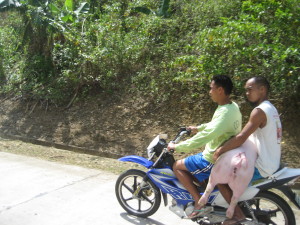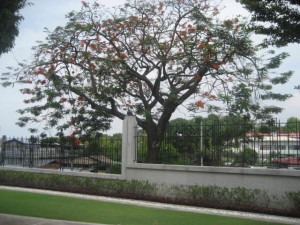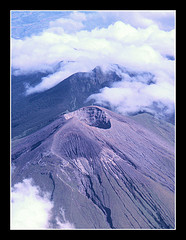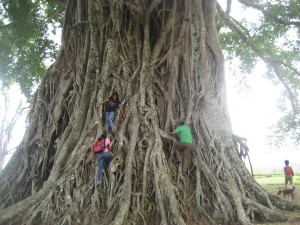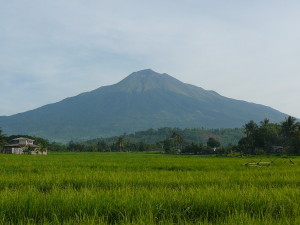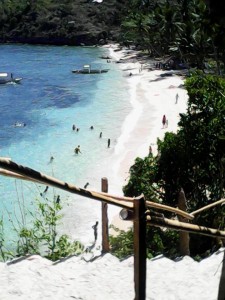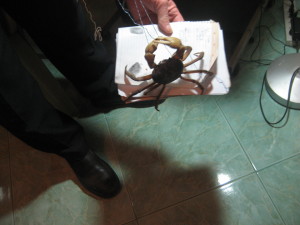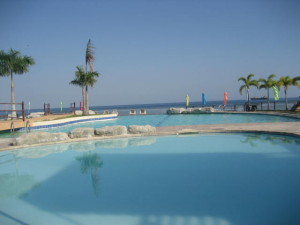
There’s another big typhoon out in the ocean.
Elder Hall looked up information about the storm on the internet. It was a very large typhoon right on track to hit Cebu. It was moving about 25 knots per hour. The next day it had slowed to 5 knots per hour. The next day the typhoon dissipated.
Well, I guess we missed that storm.
On Thursday April 10, President Schmutz came to conduct his last Zone Interviews. He presented a workshop on following the light of Christ. He spoke of the three voices that we hear:
- Our own voice, or the voice going on inside our minds at all times: This voice gets better as we respond to spirit, and worse as we reject the light. It is the voice of who we are at the moment.
2. The voice of the devil and his angels: He throws “fiery darts” but cannot see where they land, or how effective they are until we act.
The adversary seeks to smother the voice of the Spirit. His is a murmuring voice, a voice of perceived injustice, a seductive, soothing voice, a voice of intellectualism, a proud, flattering, cynical, entertaining, commercial, delirious voice.
When we learn to recognize that voice, we can simply choose not to listen. If we do not “give way to the temptations, that the evil one have place in our hearts to destroy our peace and afflict our souls” (see 2 Ne 4:27), then after a while he will get tired and shift to another target.
3. The voice of the Spirit: It is given to us as we seek the Light of Christ. It will enlighten our minds, as “there is none else save God that knowest thy thoughts and the intents of thy heart.” (see D&C 6:14-15). We can recognize the voice of the Spirit because it invites us and entices us to do good continually, and to love God. The way to judge this voice “is plain, that ye may know with a perfect knowledge, as the daylight is from the dark.” (Moro 7:15)
If we choose the light, day by day, then the revelatory power of the Holy Ghost can become our constant guide.
*****
On Saturday night the clouds, heavily laden with moisture sucked up by the typhoon winds, moved over the islands, and it began to rain. It rained hard and almost continually for the next three days. Houses built in the lower spots were flooded. People began worrying that it would be a cold summer.
Because of the time zone difference of 14,000 miles, we watched the General Woman’s meeting on Saturday April 5, and General conference on Saturday and Sunday April 12 and 13. The conference was a pleasant contrast to the storm that beat outside. We went in and out of the rain several times during the break between meetings on Sunday. When the session started again, we were damp and as we sat the air conditioning, we wished for a warm blanket, even though the temperature outside was in nearly 80 F. (27 C).
On Sunday night we went out to visit a new member family. The trail which had been hard and dry a few days before was now a lake, and we crossed on the narrow elevated wooden planks that served as a bridge. Our shoes turned into large clumps of mud.
On Wednesday the sun came out. We rejoiced in the light and gave thanks that the rain stopped before the awesome Youth Conference, which was scheduled for April 17, 18, and 19.
We enjoyed the Youth Conference at the Hidden Valley Mountain Resort, which included a 7 AM arrival; a devotional with the Area Executive Secretary and his wife; getting-to-know-you activities; a talent night where each Branch presented an original dramatic music and dance fairy tale interpretation with elaborate costumes; a Mission: Possible program; water games and swimming; unity-building games; a semi-formal dance; Zumba; and a closing testimony meeting. We left on Saturday morning to attend a wedding in Pinamungajan, then returned to make sure that everybody and everything returned home.
We enjoyed the light of the conference and were glad that Lewis and Celia were able to play in the sun while they were here.



